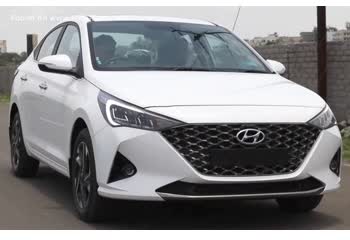Everything you need to know about specifications and performance - Volkswagen Golf 2020 - 1.0 TSI (90 Hp)

Overview:
What is the engine capacity of a Volkswagen Golf 2020?
The engine capacity of the Volkswagen Golf 2020 is 999.
Volkswagen Golf 2020 How many horsepower?
The engine power of the Volkswagen Golf 2020 is 90 Hp.
What is the Volkswagen Golf 2020 engine?
Volkswagen Golf 2020 engine is DLAB. (Click to see other cars using the same engine)
How much gasoline does a Volkswagen Golf 2020 consume?
The Volkswagen Golf 2020 consumes 4.5 liters of gasoline per 100 km
General:
Brand: Volkswagen
Model: Golf
Generation: VIII
Modification (Engine): 1.0 TSI (90 Hp)
Start of production: March, 2020
End of production: 2024
Powertrain Architecture: Internal Combustion Engine
Body type:Hatchback
Seats: 5
Doors: 5
Engine:
Engine systems: Start & Stop System
Power: 90 hp
Power per litre: 90.1 hp/l
Torque: 175 nm @ 1600-3000 rpm.
Engine Model/Code:DLAB
Engine displacement: 999
Number of cylinders: 3
Engine configuration: Inline
Number of valves per cylinder: 4
Fuel injection system: Direct injection
Engine aspiration: Turbocharger, Intercooler
Engine oil capacity: 4 l
Engine layout: Front, Transverse
Cylinder Bore: 74.5 mm
Piston Stroke: 76.4 mm
Compression ratio: 10.5:1
Performance:
Fuel Type: Petrol (Gasoline)
Fuel consumption (economy) - urban: 5.4 l/100 km
Fuel consumption (economy) - extra urban: 4 l/100 km
Combined fuel consumption (WLTP): 5.3 l/100 km
Fuel consumption (economy) - combined (NEDC): 4.5 l/100 km
Fuel consumption at Low speed (WLTP): 7 l/100 km
Fuel consumption at Medium speed (WLTP): 5.3 l/100 km
Fuel consumption at high speed (WLTP): 4.6 l/100 km
Fuel consumption at very high speed (WLTP): 5.4 l/100 km
Fuel consumption (economy) - urban (NEDC): 5.4 l/100 km
Fuel consumption (economy) - extra urban (NEDC): 4 l/100 km
Fuel consumption (economy) - combined: 4.5 l/100 km
Emission standard: Euro 6d-ISC-Fcm
Acceleration 0 - 100 km/h: 11.9 sec
Acceleration 0 - 62 mph: 11.9 sec
Maximum speed: 188 km/h
Weight-to-power ratio: 13.1 kg/Hp, 76.3 Hp/tonne
Weight-to-torque ratio: 6.7 kg/Nm, 148.3 Nm/tonne
Acceleration 0 - 60 mph: 11.3 sec
Space:
Kerb Weight (kg): 1180
Max. weight (kg): 1730
Max. roof load: 75 kg
Max load (kg): 550
Trunk (boot) space - maximum: 1237 l
Trunk (boot) space - minimum: 381 l
Permitted trailer load with brakes (12%): 1100 kg
Permitted trailer load without brakes: 620 kg
Permitted towbar download: 80 kg
Permitted trailer load with brakes (8%): 1300 kg
dimensions:
Length: 4284 mm
Width: 1789 mm
Height: 1491 mm
wheelbase: 2619 mm
Front track: 1533-1549 mm
Rear (Back) track: 1504-1520 mm
Minimum turning circle (turning diameter): 10.9 m
Powertrain, Suspension and Brakes:
Drivetrain Architecture: The Internal combustion Engine (ICE) drives the front wheels of the vehicle.
Drive wheel: Front wheel drive
Number of gears and type of gearbox: 5 gears, manual transmission
Assisting systems: ABS (Anti-lock braking system)
Tires size: 195/65 R15
Wheel rims size: 6J x 15
See also

Other generation.
Its production began in 2015 until 2016

Same engine. (DLAB).
Its production began in 2020 until 2023

Same engine. (DLAB).
Its production began in 2020 until 2023

Same production year and almost the same engine capacity.
Its production began in 2020 until 2023

Write a comment